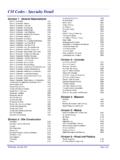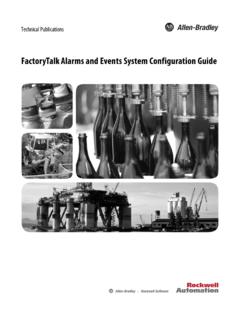Transcription of Electrical System Standards & Design Guidelines
1 1 Electrical System Standards & Design Guidelines 1 Wisconsin Department of Administration 2 Division of Facilities Development (DFD) 3 Revision Date: 01/22/2018 4 5 Table of Contents 6 7 Page 8 I. Introduction 1 9 10 II. General Design Standards & Guidelines 2 11 12 1. Electrical Service - General 13 2. Medium Voltage Distribution Systems 14 3. Utility Coordination 15 4. Site Work 16 5.
2 Coordination With Other Divisions 17 6. Continuity of Services and Systems 18 7. Conduit and Raceways 19 8. Wire and Cable 20 9. Grounding and Bonding 21 10. Wiring Devices 22 11. Motors and Motor Control 23 12. Low-Voltage Transformers 24 13. Panelboards 25 14. Circuit Breakers and Fuses 26 15. Lighting 27 16. Equipment Connections 28 17. Emergency Systems/Generator Sets 29 18. EMF and Harmonics 30 19. Surge Suppression 31 20. Security Electronics Systems 32 21. Fire Alarm Systems 33 22. Telecommunications 34 23. Audiovisual Systems 35 36 III.
3 Engineering Requirements 20 37 38 IV. Drawing Requirements 22 39 40 V. Specification Requirements 25 41 42 VI. Preliminary Review Stage Requirements 25 43 44 VII. Final Review Stage Requirements 26 45 46 I. Introduction 47 48 This manual establishes Standards and Guidelines for the Electrical Design , construction and renovation of 49 State of Wisconsin facilities. These Standards and Guidelines were developed from past Division of 50 Facilities Development (DFD) and agency experience with the operation and maintenance of State 51 Electrical systems.
4 52 53 Consultants and agency personnel should routinely review these Guidelines and the DFD master 54 specifications as they apply to each particular project. The requirements of these Guidelines may exceed 55 2 what is required by code, but in no case do these Guidelines intend to allow designs not conforming to 1 existing codes. It must be understood that there are many situations requiring special Design and 2 application which will not be covered in these Guidelines .
5 When a specific Design or equipment criterion is 3 in question, it is the responsibility of the consultant or agency personnel to discuss the issues with DFD 4 before incorporating them into the contract documents or construction. Deviations from these Electrical 5 Guidelines are not permitted without approval from DFD. 6 7 These Guidelines will remain under continuous scrutiny and change. Changes will result from the overall 8 advancement of technology and practices in the Electrical industry, from further experience in State 9 facilities, and from the comments of consultants, contractors, and agency personnel.
6 10 11 It should be noted that State agencies might maintain their own site-specific Electrical Guidelines . The 12 Electrical consultant shall check with the State agency to determine if any such Guidelines exist that would 13 apply to their scope of work. Agency Guidelines shall supplement these DFD Guidelines and the DFD 14 master specifications. Conflicts between the Guidelines shall be discussed with DFD and the agency to 15 achieve resolution. 16 17 II. General Design Standards & Guidelines 18 19 1.
7 Electrical Service - General 20 Most of the larger existing State facilities have normal power distributed by an existing 21 State-owned medium voltage distribution System . Power for emergency and standby 22 systems is typically provided from generators installed within each building , or from a 23 centrally-located generator serving numerous buildings. Electrical service for new 24 buildings at these sites shall be extended from the existing State-owned distribution 25 systems.
8 The existing site distribution will dictate the Design of a new building s normal 26 and emergency power distribution systems. It is the responsibility of the System designer 27 to verify existing System capacity when adding new building loads to an existing State-28 owned distribution System . 29 For new facilities with multiple buildings (for example, a new prison complex), the 30 Electrical service shall typically be received from the local utility at a single location. 31 Electrical service to buildings at the facility shall be extended on a customer-owned 32 distribution System .
9 The use of either a medium voltage or a 480V distribution System 33 shall be considered. The distribution System Design choice shall be based on the facility s 34 layout, loads, etc. Power for emergency and standby systems shall be provided from a 35 centrally-located generator serving multiple buildings, campus style, or from separate 36 generators installed at each building intended to serve only one building . Life-cycle 37 costing analysis shall be performed to back up distribution System Design choices.
10 38 For new stand-alone buildings (for example, a new DMV service center, DNR office 39 building , etc.), a secondary service from the local utility company shall be obtained. 40 The Electrical distribution System shall meet the requirements of the Wisconsin 41 Department of Safety and Professional Services (SPS) Wisconsin Commercial building 42 Code SPS 360-366 and the Wisconsin Department of Safety and Professional Services 43 Electrical Code SPS 316. 44 Pay particular attention to the requirements of providing emergency power.











